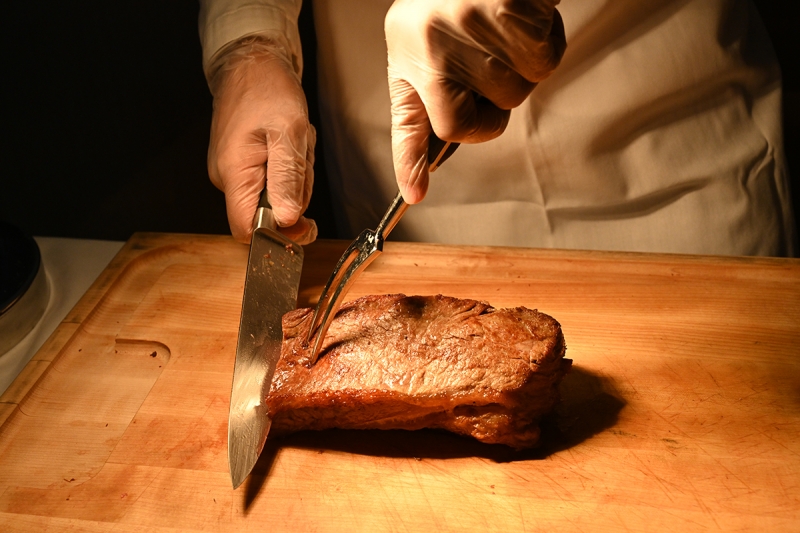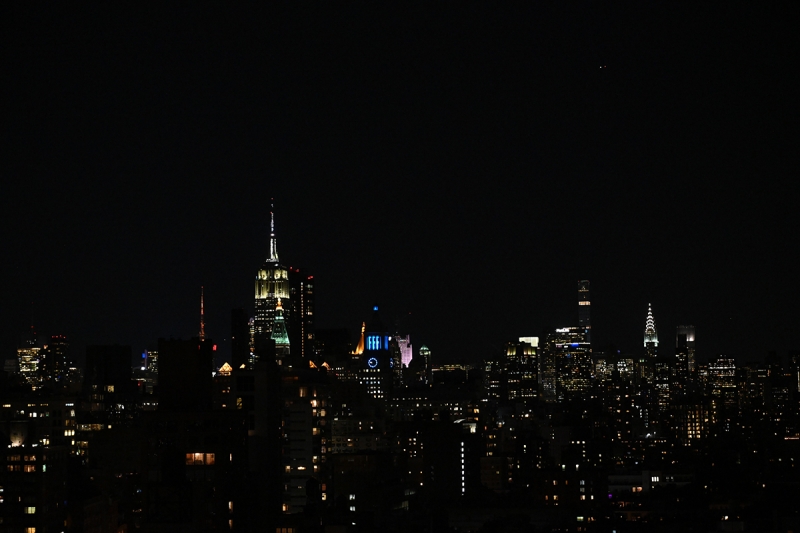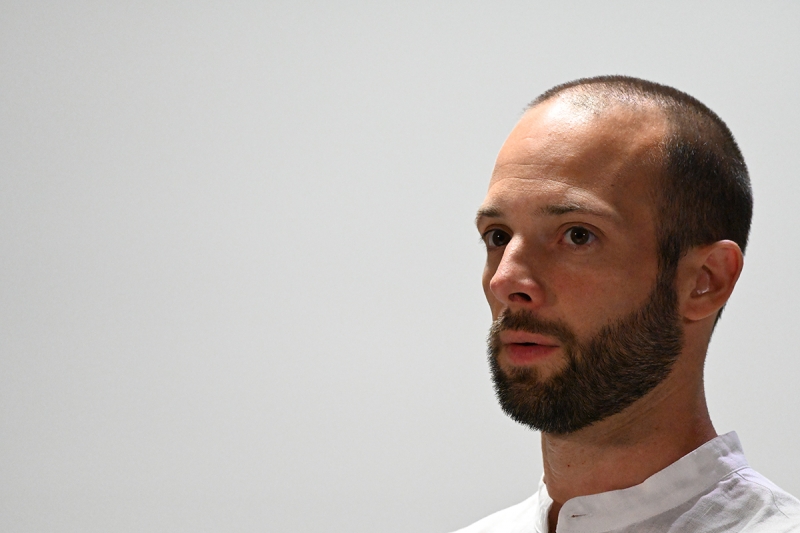Nikon Z 7 first look
Nikon teased the introduction of its new, full-frame mirrorless cameras—the 45.7-megapixel Z 7 and 24.5-megapixel Z 6—with a series of videos, and formally
8.30.2018
Nikon teased the introduction of its new, full-frame mirrorless cameras—the 45.7-megapixel Z 7 and 24.5-megapixel Z 6—with a series of videos, and formally announced the two on August 23 with press events in Tokyo and New York City. I attended the launch in New York and spent a few hours shooting with a pre-production Z 7 (the Z 6 was not yet available) and several lenses.

Design and Ergonomics
Nikon DSLR shooters will immediately feel at home with the Z 7. Although, at 5.3 x 4 x 2.7 inches and 20.7 ounces, the Z 7 is relatively small and light, the camera is clearly part of the Nikon family. With just a couple of exceptions, controls and menus are pretty much the same as other recent Nikon DSLRs, particularly the D850.
A nice-sized grip provides a comfortable handhold. From observation, photographers with larger hands than mine seemed to have no issues with the size of the grip or the camera.
I’m normally not a huge fan of electronic viewfinders (EVF) but the Z 7’s is absolutely gorgeous. It provides near 100-percent coverage, is bright, clear and a real pleasure to use. And being able to see the menu and preview exposure and white balance changes, for example, really streamlines the ability to capture the perfect shot. The eyecup protrudes slightly so your nose isn’t smooshed up against the touchscreen monitor.

Nikon Z 7 and Nikkor Z 24-70mm f/4 S at 45mm, 1/400 second at f/8.0, ISO 2000
The touchscreen monitor is a welcome addition. Bright, clear, and responsive, the Z 7 offers touch focus, touch shutter, pinch to zoom, swipe, and the ability to navigate menus and settings by touch. It’s a tilt screen rather than vari-angle but works just fine for overhead and low angle shots. I just wish that touch focus was available when shooting with the EVF. Nevertheless, the small joystick efficiently moves the focus points across the screen to take advantage of the camera’s 493 focus points across 90 percent of the screen.
I was a little disappointed that the focus switch on the front has disappeared. Fortunately, there are plenty of customization options for easy access, though there are some differences in the Z 7’s autofocus (AF) system, so you’ll need to take time to familiarize yourself with the changes. Otherwise, Nikon users can rely on muscle memory to work the camera.
Yes, there’s “only” a single card slot and it uses an XQD card. While some people are making a huge fuss about it, I’m not sure it is—or should be—a deal breaker. I would prefer dual card slots but I’m willing to trade off for a slimmer camera. And XQD cards are, in my experience, more reliable than CompactFlash and SD cards. Plus, the Z 7 will be compatible with CF Express cards with a future firmware update.

Nikon Z7 and Nikkor Z 24-70mm f/4 S at 70mm, 1/60 second at f/5.6, ISO 8000, EV -1
Features
I didn’t have time to dig into or try all the camera’s features but a few are important to note. Some, like focus peaking, come from the D850, while others are unique, like the new “pinpoint” focus option. There’s a silent interval timer, improved focus stacking, and a new mid-range sharpening option in Picture Controls. And there are about 20 new creative Picture Controls including various monochrome and toning options. Nikon provides additional details and reference materials on its site if you want to explore more of the camera’s features.
Performance and Image Quality
Most of the test images were shot with a single pre-production Z 7 camera, although some test shots were captured with three other pre-production Z 7’s depending on availability at the daytime and evening events.
In addition to the new Nikkor Z 24-70mm f/4 S and Z 35mm f/1.8 S lenses, I also shot with two lenses using the FTZ adapter: the new AF-S Nikkor 500mm f/5.6E PF ED VR and the AF-S Nikkor 105mm f/1.4E ED lenses.
Across the board, performance was excellent. I noticed no difference in the Z 7’s exceptional AF speed regardless of camera or lenses. The F-mount lenses and adapter worked seamlessly with the Z 7 and added no real noticeable weight or bulk. I’ve seen reports of back focusing but didn’t experience any anomalies myself. Given that these are pre-production cameras, I’d be more surprised if there weren’t any issues. On perhaps a couple of occasions the lenses hunted for focus for a split second, but fast, accurate AF was the norm for both static and moving subjects.
I was impressed with the in-camera VR. It’s 5-axis with the Z lenses and 3-axis with F-mount lenses. I was even able to capture sharp images with the 500mm lens handheld at 1/320 second. And shooting at 1/30 second with shorter lenses was a breeze, too. (I generally try to keep my shutter speed at a minimum of 1/100 second.)

Nikon Z 7 and AF-S Nikkor 500mm f/5.6E PF ED VR, 1/320 second at f/6.3, ISO 3200
Images were exceptionally sharp, and while the 105mm f/1.4 has a very shallow depth of field wide open, it was easy to see how adeptly the camera and lenses produced crisp, well-detailed images.
Low light/high ISO performance was equally impressive. Although I didn’t push the ISO to its extended 102,400, the Z 7 did a decent job at 25,600 while still retaining good detail.
At 9 frames per second, the Z 7 has a respectable continuous shooting speed, especially considering the amount of data it’s pushing through.
A note about battery life: The CPIA rating of 330 shots is way off for the type of shooting I did at the event. The battery indicator barely moved after 600 shots and some people captured far more than 1,000 images on a single charge.
One key point about the Z 7 (and the Z 6) is that Nikon users don’t have to start over to bring this camera into their workflow. Sure, you’ll have to spring for the adapter to use your F-mount lenses, but these cameras can also use the same EN-EL 15/15a batteries as your other Nikon DSLRs. You won’t get as many pictures on a single charge as you would with the Z 7’s EN-EL 15b but, hey, if you’re a Nikon user, the Z 7 is a seamless addition.
The Nikon Z 7 starts at $3,399.95 and the Z 6 at $1,999.95. For more technical details and specifications, see contributing editor Ellis Vener’s write up or visit Nikon.
*All images were captured with pre-production cameras.
Tags: mirrorless cameras nikon


 View Gallery
View Gallery
